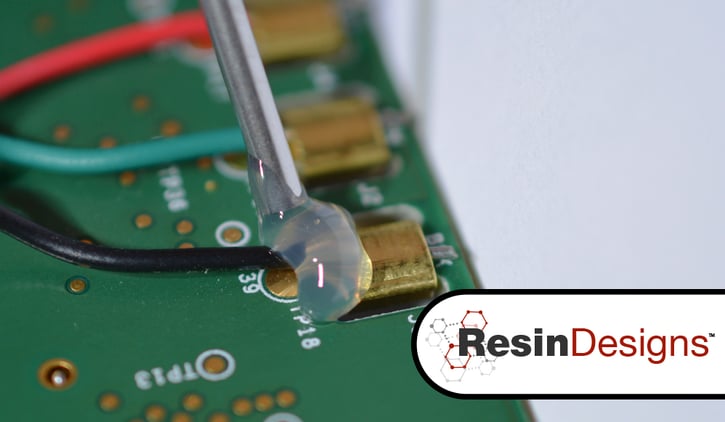Cationic and free radical are the two most popular mechanisms for UV adhesives. Approximately 93% of the UV market is in free-radical chemistry while cationic has about 7%. Although a minority of the market, cationic adhesives provide strategic advantages over traditional free-radical acrylate chemistries. These advantages are detailed below.
1. Shadow Cure
When energy from light is introduced into a cationic system, the photo initiator releases a strong acid that acts as a catalyst starting the polymerization. It is important to note that for the polymerization to occur, only the acid is necessary, not the light energy producing the acid. This strong acid has two benefits over a free radical. The first is that the active life of the acid catalyst is much longer than a free radical. The active life of a free radical is measured in seconds while the acid can survive for days. The second benefit is that acid catalysts are not consumed in the polymerization reaction whereas free radicals are. These two differences allow cationic reactions to continue curing after UV exposure, unlike free-radical reactions. This is the shadow cure effect. As long as the system has had UV exposure, it will continue to cure after the light source is removed.
2. Delay Cure
The delay cure is a functional use of the shadow cure phenomenon. There are techniques, such as incorporating polyols into epoxy cationic reactions, that play on the shadow cure effect and delay the polymerization of the species. By delaying the polymerization, there is a lag time between light exposure and the substance hardening.
Delay cure cationics can provide a unique strategic advantage to manufacturing processes. An example is a process that requires a one-part adhesive to bond two, light-blocking substrates. Historically a UV PSA could be used. These free-radical adhesives cure instantaneously, but when polymerized are partially sticky in nature (think Gluedot or the clear sticky material on the back of a new credit card). Due to the tackiness of these products, they will mate well between two substrates after polymerization. The problem is the PSA will never be a tough polymer. This limits the upper boundary of the adherence strength and may eventually lead to creep. Cationics can solve this problem, as the substrates can be mated similarly to a PSA before the adhesive is completely polymerized. Strong controls, however, on UV exposure are paramount so the reaction rate of the cationic is consistent.
3. Reduced Shrinkage
Large percentages of shrinking can induce stress between bonded substrates. Cationics shrink less than typical free-radical systems. The mechanism behind polymerization causes shrinkage for both free-radical and cationic reactions. Unique to cationic reactions, however, is the epoxy ring opening step before molecule-to-molecule interaction. This step actually lengthens the molecule and can offset the shrinkage caused by polymerization. The ring opening step is unique to cationic epoxy and does not occur in free-radical acrylate reactions.
4. No Oxygen Inhibition
Free-radical UV polymerization can be terminated early by oxygen in the air. The oxygen itself will react with the free radical, stopping chain initiation and also preventing further chain extension through premature chain termination. This leaves the surface of the material unfinished and tacky. Cationics are not inhibited in this fashion. This allows them to cure in ambient conditions with better ease than free-radical UVs. It is important to know that humidity can slow the cationic reaction. Relative humidity must be 70% or higher to see this effect. Since the cationic reaction is initiated by an acid, basic molecules of moisture can lessen the effect of the catalyst. If the moisture level is decreased, however, the reaction will proceed as normal.
5. Higher Operating Temperatures
Typical free-radical acrylate products will not survive temperatures above 120°C and, even if they do, the product could possibly yellow and diminish in physical properties. Cationic epoxies, however, can survive temperatures as high as 200°C. Resin Designs’ Vividcure 86011 is capable of handling extreme operating conditions.
Contact us if you have a unique problem that needs a unique solution. In the next blog, we will discuss UV systems that utilize a secondary cure mechanism for applications where UV chemistry is just not enough.
As a supplier of most forms and chemistries of electronics and industrial coatings, Chase and Resin Designs can help you with an unbiased approach to evaluating your application and process. We’ll show you how to maximize efficiency, minimize cost, and improve product reliability. Our outstanding manufacturing and technical support groups can provide your organization with reliable global supply, unmatched quality, and superior technical support.









